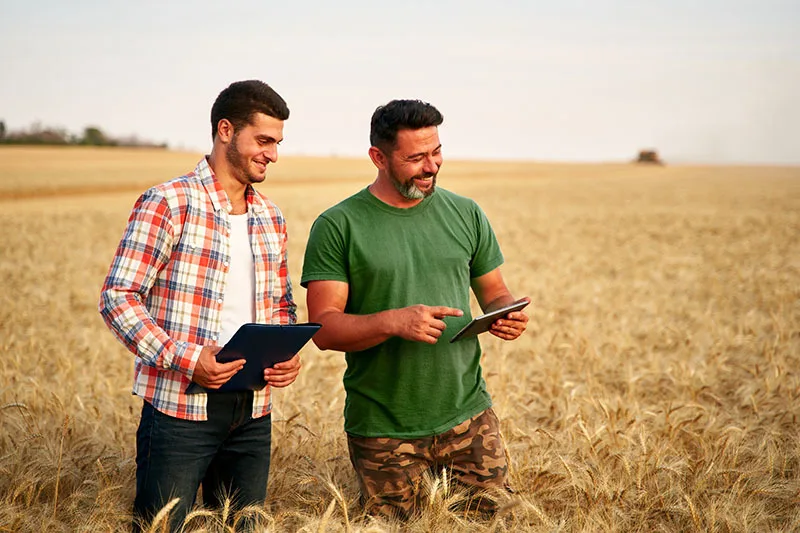
Connecting Canada
How teachers’ pandemic pivots are transforming education in the 5G era
May 25, 2021
Toronto entrepreneur Sarah Prevette (pictured) consulted with educators across North America during the early months of the pandemic. She found a reticence to go back to “normal” in the classroom, adding districts are embracing new ways of leveraging technology to deeply engage students. NICK MENZIES PHOTOGRAPHY
Mark Davidson remembers the outset of the COVID-19 pandemic as a “slow, rolling shock.” He could see it coming, but it was still jarring when it hit.
“We heard from the government on a Friday that we’d be back in school on Monday. Then we heard on Sunday: ‘No, you won’t, and you need to enable at-home learning as quickly as you can,’” says Davidson, superintendent of the Medicine Hat Public School Division in southern Alberta.
Even with so little lead-time, the division managed within a matter of days to develop online resources and restructure classes so that all 7,500 students in 17 schools -- from kindergarteners to high school seniors -- had what they needed to learn from home.
Educators across the country faced similar challenges with equal aplomb -- and while the transition to this new delivery format was burdensome, many found a silver lining in the rapid adoption of digital technology.
Says Davidson: “Staff realized that some of the online tools that they feared were accessible to them and required skills that were already within their reach.”
Future of digital education
Even as students return to the classroom as the pandemic ebbs, digital technology will be an increasingly important part of their education.
As such, the rollout of 5G technology across Canada is an essential resource for educators and students going forward. TELUS
5G
is already available in all major cities and is rolling out rapidly across all regions, preparing Canadian schools for the future of digital education, a future that educators are already embracing. By year’s end, TELUS 5G is expected to cover more than 70 per cent of Canada's population.Toronto-based
Future Design School
helps schools across North America plan for innovation and new ways of teaching and learning. Company CEO and serial entrepreneur Sarah Prevette says educators are enthusiastic about the progress made in technological advancements and delivery strategies during the pandemic, making it possible for them to embrace new teaching methods, in addition to the more traditional.“Definitely what we’ve seen from teachers is that there’s a reticence to go back to what is considered normal, and they’re seeing all of these new ways to leverage technology to really deeply engage students,” she says.
Among the pandemic-spurred changes: more teachers have employed a “flipped classroom” -- a concept that has long existed, but which has only become mainstream in the switch to online learning.
With the flipped classroom, students receive taped lectures or lessons ahead of time. They are encouraged to do their own research, then come to the classroom ready to practice, discuss or join in group projects.
Student assessments are also being rethought. As Prevette points out, “If I asked you a question and you can Google the answer to it -- that’s not a real assessment of knowledge.”
Educators are addressing this issue by coming up with evaluations that allow students to demonstrate the depth of their knowledge through alternative methods like journals, portfolios, discussions, and presentations.
Educational apps are emerging as useful tools in this pursuit. By example, Vancouver-based reading app
Simbi
is designed to motivate students to read by having them narrate books that other learners across the world can listen to as they follow along with the story. Simbi CEO and co-founder Aaron Friedland says after the pandemic hit, the platform’s user-base more than doubled in two months, and that teachers across 104 countries enjoy using it as an alternative to traditional fluency benchmarking.
With Simbi, more than 130,000 learners can narrate books for an immediate positive impact, while teachers reap the efficiency benefits of tracking their progress remotely through the app.
Access to reliable connectivity is key
In Medicine Hat, where TELUS 5G is expected to come online this year, Davidson says educators are making good use of educational software and apps. The division has also come together to create its own online school called “The Hub”, a remote learning option for children in early learning through to grade 9.
The 480-student hub began in the fall of 2020 as an alternative to returning to a physical school location or receiving pencil-and-paper packages, and may continue permanently if enrollment remains stable. The services it offers benefit those with immune sensitivities, anxiety issues, and other challenges that make it difficult to attend in-person school.
Face-to-face schools remain appealing to most students. However, says Davidson, “We've discovered there is a place and there are students for whom online learning is something we should keep and make sure that it's high quality and stable.”
These sorts of developments provide a more even footing to students who live in remote communities and already rely on distance education as a tool to learn. Improvements in online offerings will directly benefit them.

Educators with the Medicine Hat Public School Division in southern Alberta are making good use of educational software and advanced learning apps. The division has also successfully created a remote learning option for children in early learning through to grade 9, with the potential to remain in place post-pandemic, says superintendent Mark Davidson (pictured). DELMAR PHOTOGRAPHY
Government policies have made the digital divide in Canada worse, leaving some rural Canadians without optimal internet. You can help change that.
Access to reliable, high-speed connectivity is key to students’ success, however -- and something that TELUS is actively addressing. Most recently, the tech company announced it would bring its gigabit high-speed fibre network to more than one million more homes and businesses in the coming years, including under-served and Indigenous communities across B.C. and Alberta.
Efforts such as this, as well as the tech company’s ongoing 5G rollout, allow educators and educational platforms to think big. Simbi, for instance, is working with Elders from First Nations and Indigenous communities to narrate stories in their localized dialects or languages, and Friedland is excited that wireless connectivity expansion could streamline this effort.
Friedland also sees significant opportunity for 5G to facilitate the growth of platforms that use the tactics and tools of major social media platforms for education, rather than social content.
“Artificial intelligence can take student data and provide you with the next lesson, or the next book, based on performance, which creates a highly gamified experience,” says Friedland.
Prevette notes that 5G can push forward the use of augmented and virtual reality streaming in order to “deeply explore concepts that for a previous generation were only theoretical.”
Considering the potential of these next-generation innovations -- and the pre-existing demands for high-quality video streaming and teleconferencing -- Prevette says building the next-generation wireless infrastructure for our schools is imperative.
“We need to enable students to leverage the technology tools that they’re actually going to use in the real world,” says Prevette. “But also, we need to enable them to explore that future vision of the world they’re going to inherit.”
Explore similar articles

Help support rural Canadian connectivity
Better government policies are needed to help rural Canadians gain access to high speed internet.
Speak up

